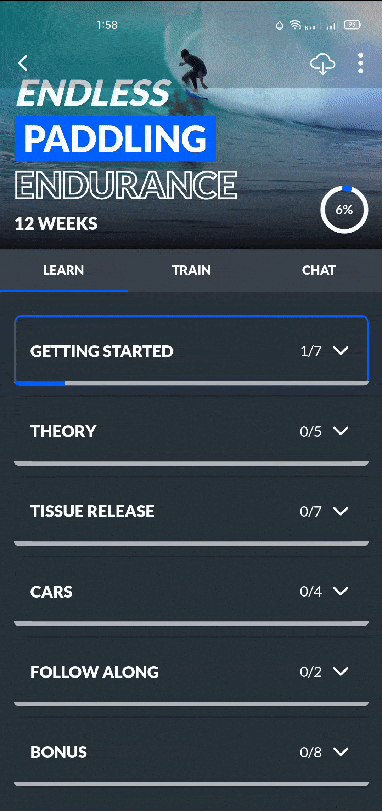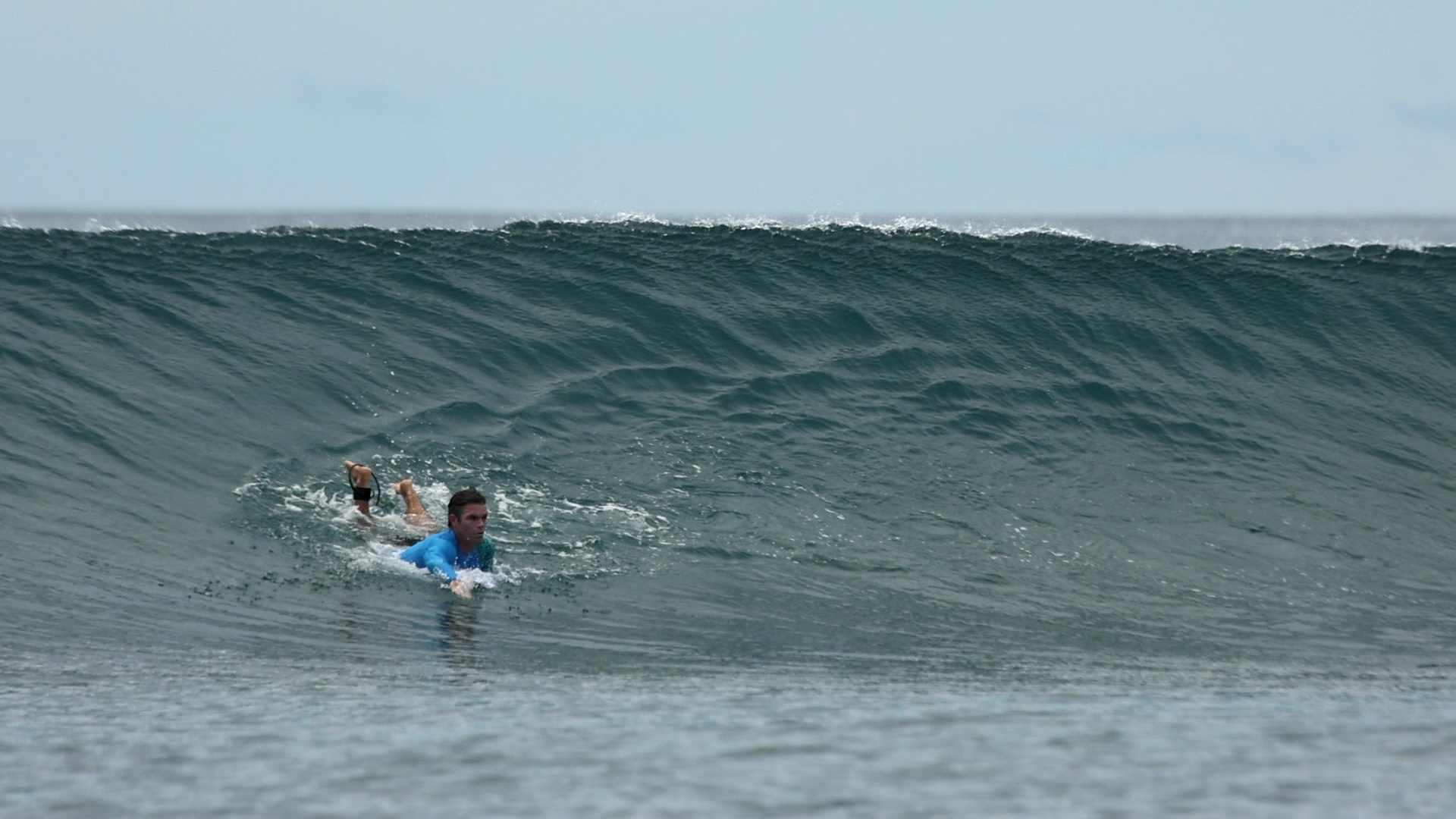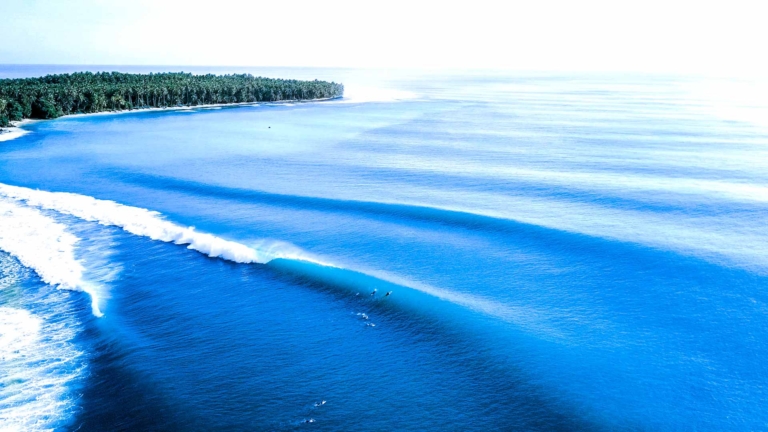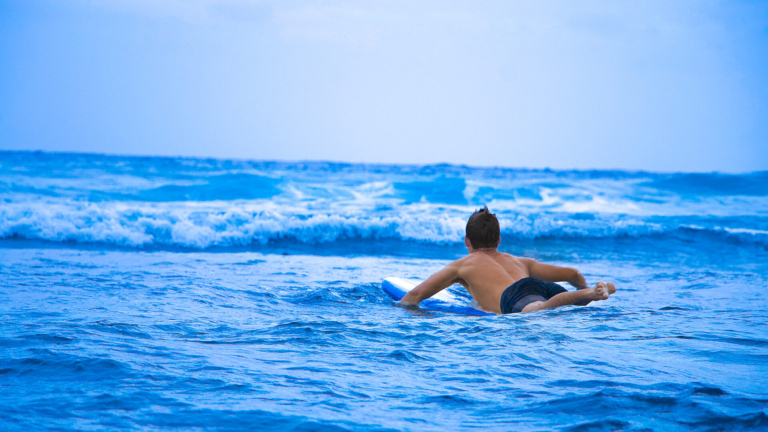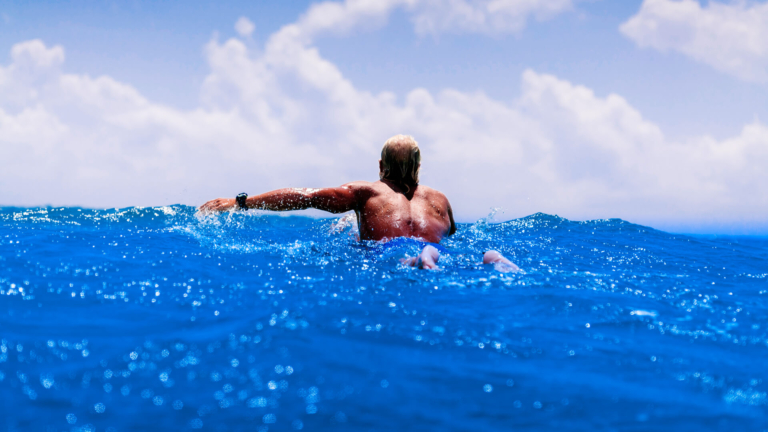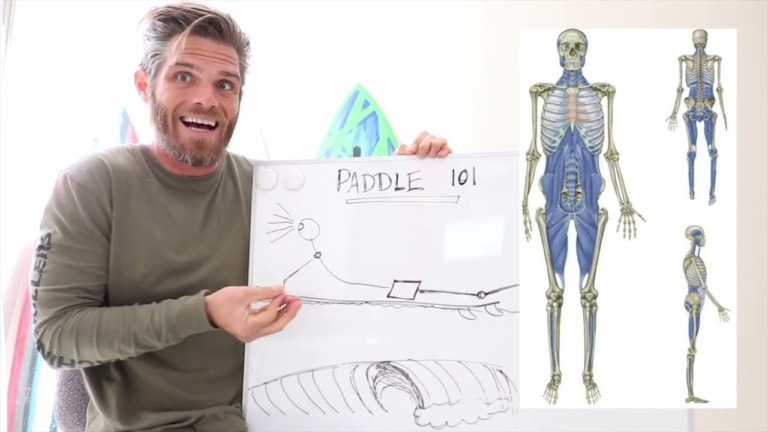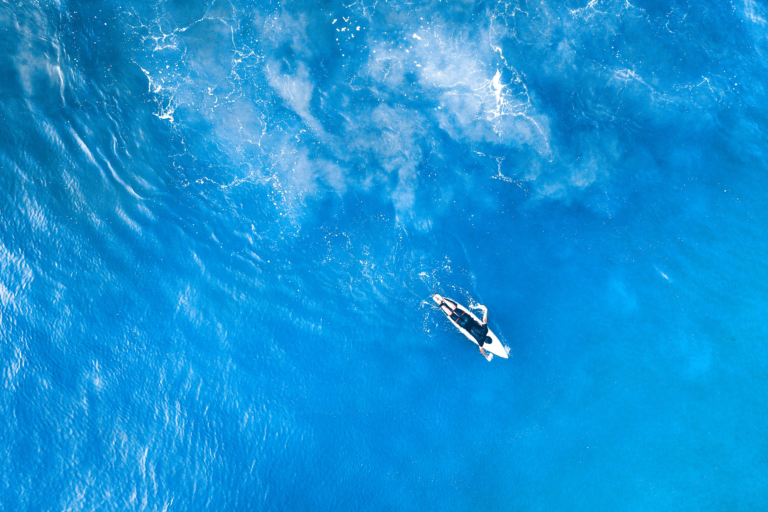Paddling Endurance for Surfers: Stronger, Faster, Durable
You’re 1.5 hours deep into your session.
It’s a beach break, so there’s been quite a few heavy paddle-outs and whitewater battles during your session.
You’re paddling back out, and you see a feathering set on the outside.
You kick into high gear to get out the back and start heading towards the cresting wave in the hopes to get into position in time.
You’re going to be in the perfect spot….

You’ve been paddling non-stop since your paddle back out, and now that you’ve shifted into high gear to get into position, you’re feeling the burn in your arms. The heaviness. The fatigue.
You get into position, turn to go, and start digging hard and powerfully, trying to match the speed of the wave of the day.
Your arms feel like you’re holding onto bricks and they weigh about 10 more pounds than they should. Despite your intention, there’s just no energy to paddle the way you need to.
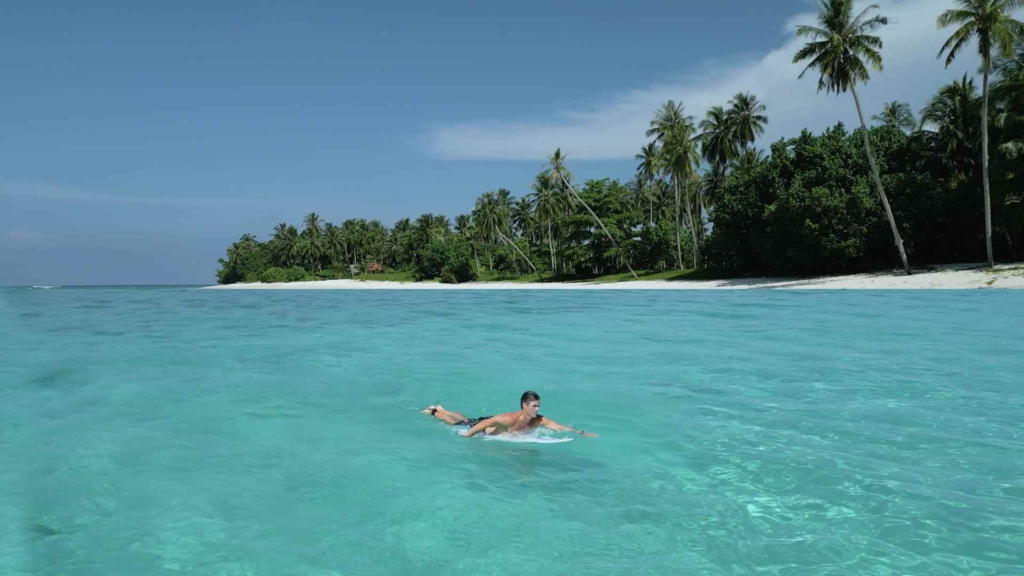
The offshores are blowing, holding the lip up, and making your entry a bit more tedious.
Your arms are gassed, and you’re digging with everything your burning and fatigued arms have got.
This IS the wave of the day. You can see the drop and the taper of the wall. If you make it you’re about to get SHAAAAAAAAACKED.
Your arms have nothing left to give, they’re exhausted, and with a flash of remorse and disbelief, you feel yourself slip off the back of the wave and you watch the back of the wave barrel down the sandbar.
Out of breath, out of gas, out of energy…..
The wave of the day was yours for the taking, but just out of reach.
You realize that you need strength-endurance… and maybe a few more inches on your board 🙂
Time to order a new custom, and alter your training. You need that extra gear, that last push of strength layered on top of your endurance.
You need Phase 3, Endless Paddle-Outs, in our Endless Paddling Endurance Program. 👇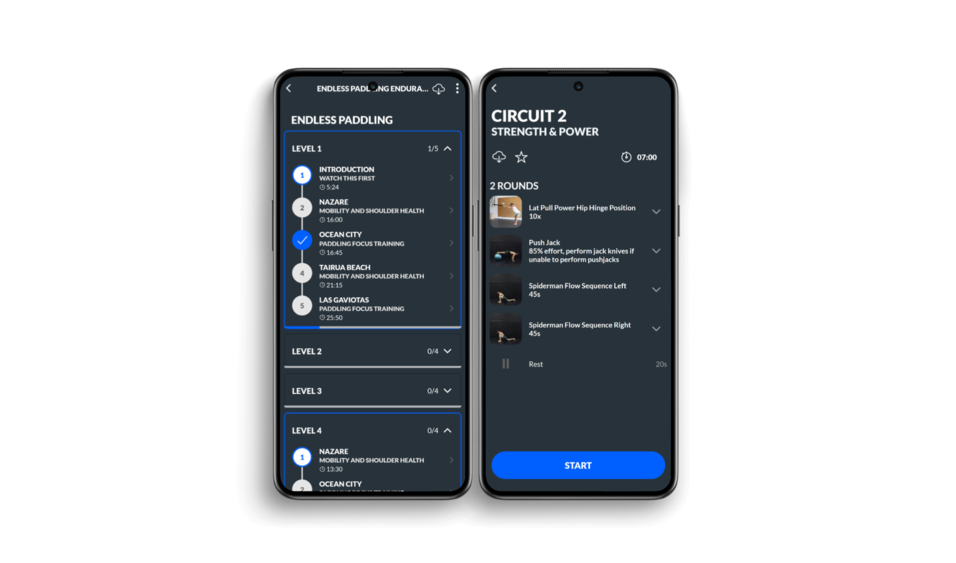
Train for Paddling Endurance & Strength
Energy! ⚡⚡⚡

Endurance is your base. The foundation of your ability to have 3 hour surf sessions.
It’s the foundational system of energy production. Your aerobic system, also known in anatomy jargon as the oxidative phosphorylation system.
It’s the method through which your mitochondria produce energy (ATP) via fats and carbohydrates through the Krebs Cycle and the Electron Transport chain.
This is the energy system that provides the largest contribution to your multi-hour surf sessions.
This is your paddling endurance.
But what happens when you need to kick it into high gear? That bout of intensity and paddling as hard as you can?
What about the situation above, when you’ve been paddling non-stop at low effort, but then suddenly have to paddle with everything you’ve got?
You need a higher octane fuel.
Your body kicks in other energy production pathways, namely your anaerobic pathways, referred to as your Glycolytic System and your Phosphagen system.
The aerobic energy system refers to the combustion of carbohydrates and fats in the presence of oxygen. The anaerobic pathways are capable of regenerating ATP at high rates yet are limited by the amount of energy that can be released in a single bout of intense exercise. – Source
These higher intensity energy production pathways are only good for short duration bouts, with the Phosphagen System being capable of producing energy for very short periods of time, and the Glycolytic System being capable of contributions for 15 seconds up to 3 minutes.
Just think of it like gears of paddling.
Casual and long duration is your aerobic system.
More intensely would be your Glycolytic System.
All out as hard as possible would be your Phosphagen System.
Gears of paddling, and shifting up or down in varying intensity and energetic demands.
Crucial to your surfing and your bouts of high demand energy production and those quick powerful strokes is your Glycolytic System.
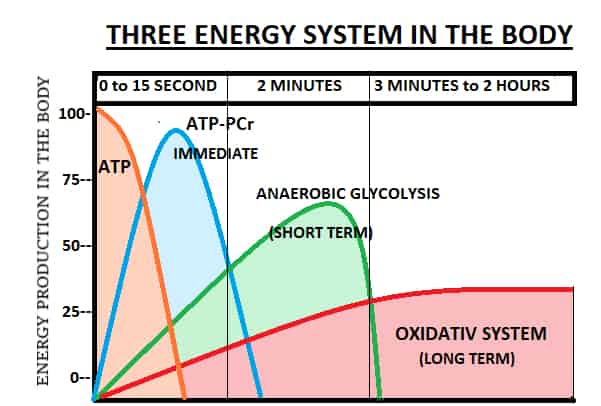
The Phosphagen System is relevant as well, but often surfers need what we refer to as Strength Endurance, meaning it’s still relatively higher rep, yet with a higher effort, hence the Glycolytic System. Think of 10-20 paddle strokes hard and fast after having just casually paddled for 4 minutes. It’s endurance, with strength and speed layered on top.
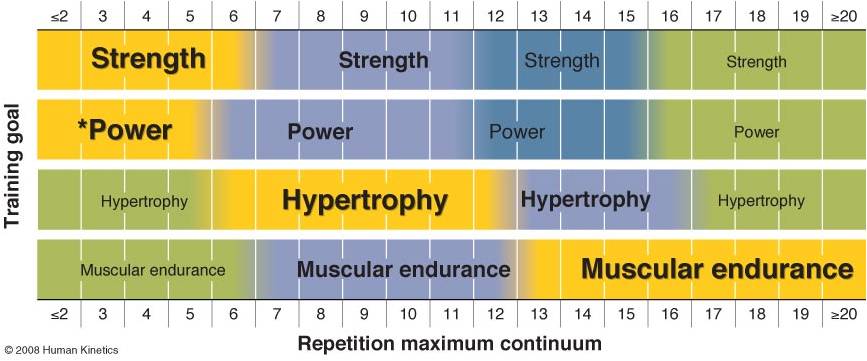
Where I use the term “strength endurance”, this image uses the term Muscular Endurance.
Same same. Sama Sama (bahasa-indonesian).
Basically, choose a weight that allows you to get somewhere in the vicinity of 10-20 reps.
Keep the rest periods relatively short, no longer than 45 seconds.
Tax the energy systems that not only support strength (the glycolytic system), but also endurance (the aerobic oxidative system).
But since you’re a surfer, let’s do this even more effectively.
Paddling Endurance for Surfers – Strength Endurance Circuits
In the Endless Paddling Endurance program, workouts progress from restoration of shoulder health, flexibility, and longevity, to endurance work, to strength endurance and functional circuits.
You not only improve the health of your shoulders, but you also train to make them robust, durable, and capable of paddling as long as you need.
In Phase 3, aptly named Endless Paddle-Outs, you’ll integrate functional strength endurance circuits. This essentially means you’re using exercises that not only target the muscles specifically used during a paddle stroke, but you’re doing so in a way that challenges the varying energy systems and muscular demands.
A cool example is this:
2 → 4 Rounds.
Lat Pull 2-Arm Speed Pull: 8-15 reps *(based on shoulder health)
Crawl Pattern Stability: 60seconds of alternating movement forwards and backwards
Prone Rhomboid Thoracic Pull: 2 sec pause, 30 reps
Rest 45 Seconds. 🧘♂️🧘♀️
That’s a BANGER!!!
You train high speed endurance with the lat pull in a higher rep range.
You jump into endurance and stabilization of the shoulder joint with the crawl pattern.
You keep the energy demands up of the shoulder muscles and your postural muscles with the rhomboid thoracic pull.
Don’t take my word for it…. Do it…. Feel it… Enjoy the burn.
I guarantee as soon as you do it, you’ll feel it, and you’ll know why I’m recommending it.
Send me a check in the mail. We just boosted your strength endurance.
Smart training is all about understanding what the physical requirements are of the sport, and then using exercises that target those particular movements or muscle groups, and the particular energy systems.
Paddle Endurance – For the Gym Bro’s
For those of you that have access to a gym, I want to give you an easy weights based circuit that follows the thought process from above.
Lat Pull-downs. Tricep Extensions. Deltoid Raises
3 Exercises. One after the other. Higher rep ranges. Minimized rest between sets.
3-5 Rounds.
Lat Pull-downs: 18reps with a slightly faster pull and a controlled return.
Tricep Extensions: 15 reps with a slightly faster push down and a controlled return.
Deltoid Raises: 20 reps with a constant slower tension.
Rest 45 seconds.
Get after it! Yewwww!
A great deltoid exercise is this one: Scaption Deltoid Fly
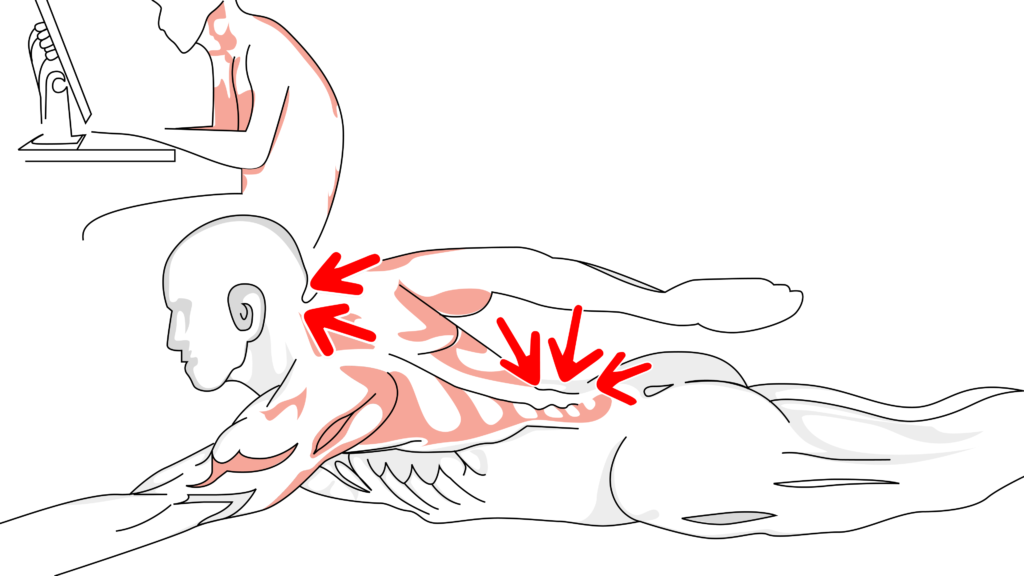
If you consider the movement of a paddle stroke, the latissimus dorsi muscle and the triceps are your primary paddling “pullers”, as they extend the elbow and the arm. The deltoid and trapezius muscles are largely responsible for the recovery stroke, or the action of pulling your arm out of the water and then reaching forward.
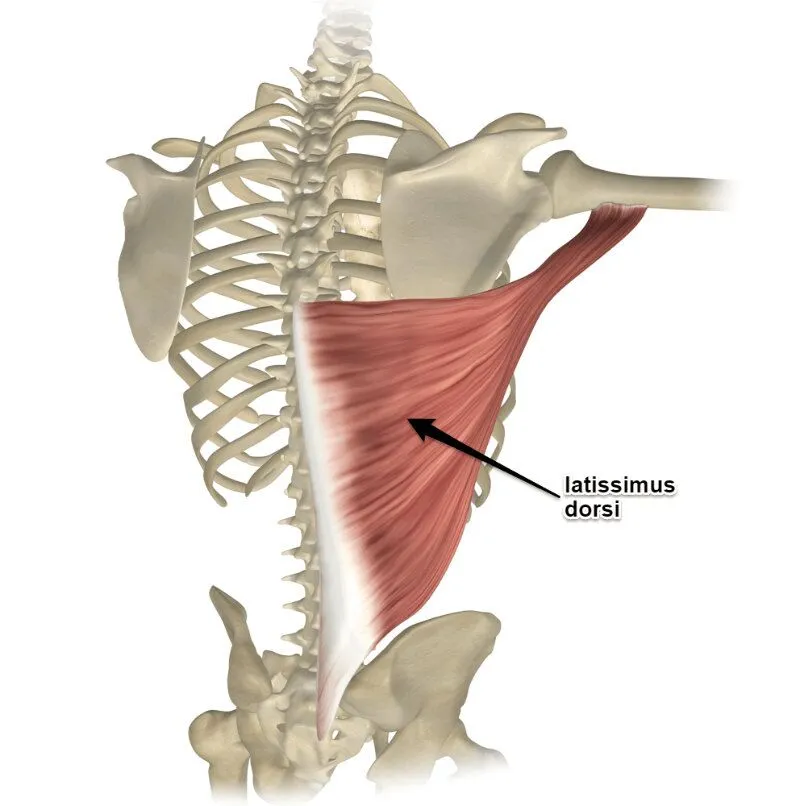
Yes, for the anatomy driven nerds, I’m absolutely aware there is more nuance to this and other muscle actions involved, but for brevity and clarity, the above is a simplified and sufficient understanding.
The above Gym Bro circuit taps into those specific muscles, and within the rep ranges to elicit the energy system demands and therefore responses.
It’s a good circuit. Do it!

With a few rounds of the circuit, adhereing to rep ranges, getting the resistance right, and keeping the rest periods short, you’ll feel the burn and train your body to withstand those demands.
The results… better endurance and bursts of strength in the water.
Do you dig this training?
Do you want a day to day follow along training process that delivers results in the water?
Do you want to be a paddle monster instead of a weak and fatigued weekend warrior?
